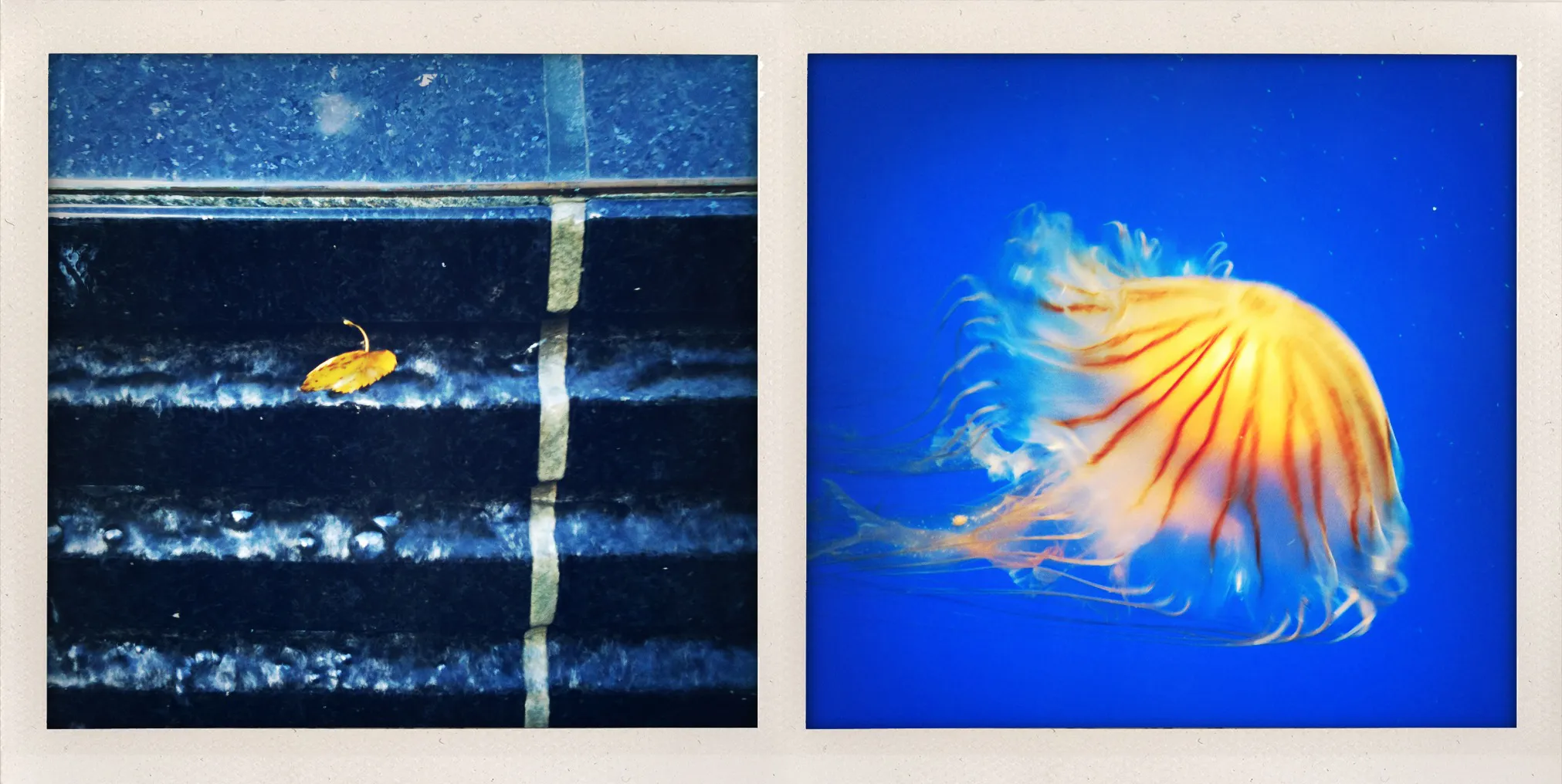Green

This diptych pairs a yellow leaf resting on fountain steps with a jellyfish suspended in aquarium water. Both subjects share similar curved forms and golden-yellow coloring against deep blue backgrounds, creating immediate visual resonance despite occupying different worlds—one terrestrial, one marine.
The title functions as a color theory joke: blue and yellow traditionally combine to create green, yet that synthesis never appears. The absent green becomes conceptual rather than literal, suggesting potential unity between land and sea that remains unrealized. Both subjects exist in water but remain separate, their formal similarity highlighting environmental division.
The left image’s horizontal architectural lines create rhythmic structure, echoing the organic pulse of the jellyfish’s movement. The work examines how visual similarity prompts the mind to seek connection, even when contexts remain fundamentally distinct.
Essay written: November 2025